Faraday Pouch: What Is It and How it Works?
Introduction
Faraday Pouch is a portable bag lined with conductive, signal-blocking material that protects electronic devices inside from receiving or sending out any wireless communications. It uses a physical phenomenon of a Faraday cage, but instead of blocking electric charges, it does so for electromagnetic waves, securing everyday items like car key fobs, smartphones, and contactless cards. When a device is completely locked inside, the pouch stops radio frequencies used by RFID, NFC, Bluetooth, Wi-Fi, GPS, and mobile networks, which means your phone can’t be reached or located, your car key signal can’t be relayed, and your cards can’t be scanned.
You don’t need a degree in electromagnetic physics to use one, but a piece of Faraday-cage information definitely won’t hurt: electromagnetic fields, once they hit a conductor, travel around it instead of passing directly through. That’s the principle the Faraday Pouch uses – it creates a “quiet zone” inside—no signal in, no signal out.
Table of Contents
How does a Faraday Pouch work
Inside the Faraday Pouch is a layer (often multiple layers) of metal-infused fabric or mesh. When you close the pouch properly (usually with Velcro, a fold-over flap, a magnetic strip, or a simple zipper – anything that seals effectively), that lining forms a perfect conductive shield.

Incoming radio waves cannot penetrate beneath the aforementioned layers of conductor. Instead, they create an electromagnetic current on the outside layer, travelling around the pouch’s content without ever reaching it.
The results are phenomenal for how simple the idea is: devices within the Faraday Pouch cannot connect with the outer world’s signals, and their own signals cannot leak out.
Key information: quality of the seal is everything. Even small gaps can potentially create “leaks” that allow signals escap. A good pouch is usually designed to overlap materials at the mouth to maintain the protective shell when closed.
If you’d like to know more about a Faraday cage as a physical phenomenon, feel free to check out our article on it here.
Everyday use and Benefits
How can a Faraday Pouch benefit your everyday life?
Now that we have established how a Faraday Pouch works, you can probably already picture the possible benefits it can bring to you in everyday use, but do you really know the full extent of it?
Car Key Fobs – Relay-attack protection

Keyless entry, also known as Keyless Go systems require the car’s key fob to constantly emit signals. That’s why whenever you approach your car while having your key in your pockeet or purse, it unlocks automatically – without you even needing to touch the key fob.
As convenient as it is, this solution also created a new, unexpected issue – thieves can use special devices called “relay amplifiers” to extend the key fob’s signal from inside your home to your driveway, unlocking and starting your car. Storing keys (and spares) in a Faraday Pouch blocks the key’s RF signal so it can’t be captured or relayed.
Smartphones – Privacy on demand

Your phone (and many handheld GPS or tracking gadgets) is a multi-radio computer you carry everywhere in your pocket. It constantly connects with cell towers, Wi-Fi access points, Bluetooth/UWB beacons, and sometimes NFC, receiving and sending out information without your knowledge. Even the Airplane mode doesn’t cut it off completely – some background services and re-enable the radio receiving and transmitting.
You might think it’s all within your control, but you never know what information is being exchanged and with whom. Live tracking, targeted stalking, and remote wipes are just a few examples of what can happen with your phone unprotected. A sealed Faraday Pouch successfully cuts all paths of connection, so the device cannot be found by any reception and cannot be paired, tracked, or pinged until you take it out.
Contactless payment cards abd passports – Anti-skimming

EMV contactless cards, transit passes, office badges, and e-passports carry RFID/NFC chips.
These chips are passively powered by a reader that emits an electromagnetic field (typically 13.56 MHz). When energized, they automatically exchange data like token, travel balance, or passport identifiers.
It’s simple and effective, but it brings out some safety concerns. In crowded spaces, a concealed reader can power and card or passport without physical contact (a so-called “skim”), capturing data, cloning, or privacy invasion, which later leads to identity theft and fraud. Thin “RFID safe” products that don’t fully encase the chip, like sleeves shown in the picture, can leave gaps, and those gaps render the protection useless – a proper Faraday Pouch, in the form of a conductive envelope, is required to secure them properly.
Limitations and common misconceptions
What’s true and what’s not?
Build quality vs Performance

A Faraday Pouch only works if its conductive material creates a continuous, protective envelope. The smallest gaps can cause signals to leak.
The weakest point is usually the closure — a simple snap or a button won’t be enough to keep the devices inside safe. The best options are usually equipped with an overlapping roll-top or well-designed magnetic/Velcro closures that maintain contact all the way across.
Prefer multi-layer shielding fabrics and stitching that doesn’t puncture or expose the liner at seams. On the same thought, avoid overstuffing, which stretches the fabric and creates leaks. Always make sure to inspect the inner metallic fabric for creases or wear (keys can abrade it), and test monthly—if a phone rings or a fob unlocks while inside, the pouch has lost integrity and should be replaced.
Defying Gravity
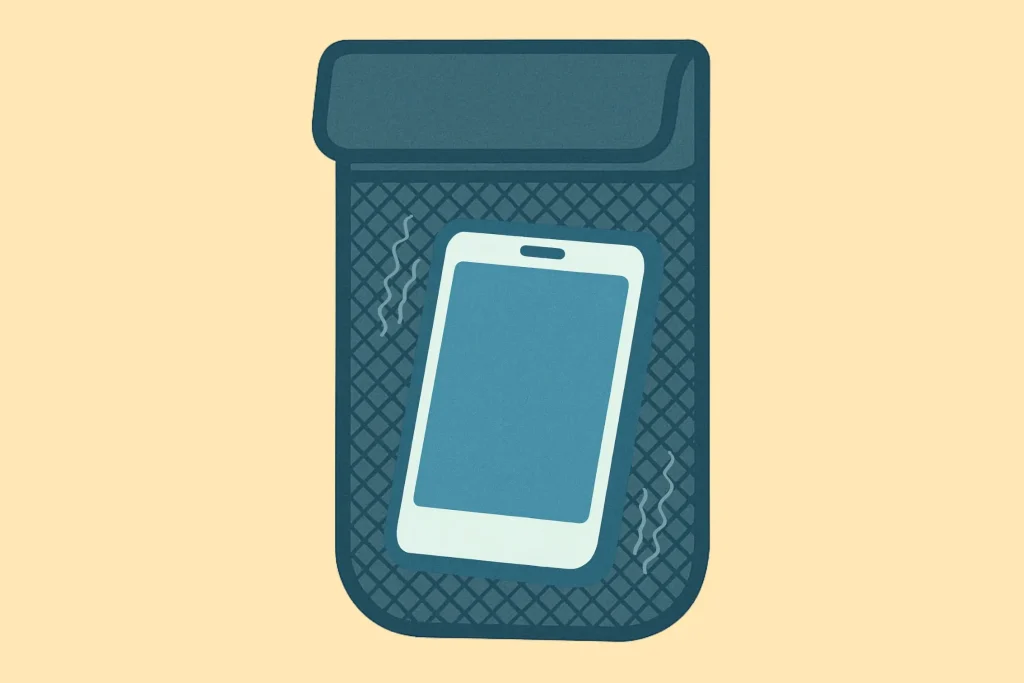
To put it in simple terms – not all energy is the same, and not all will be defied by a Faraday Pouch. It’s protection is strictly frequency-dependent – it’s excellent at stopping high-frequency radio waves and electric fields (like aforementioned cellular, Wi-Fi, Bluetooth, RFID) thanks to surface currents of the conductor that are able to neutralize those fields inside the enclosure.
However, at very low frequencies and for static magnetic fields (like a magnet), those currents won’t form well enough to stop the field from getting through – which is exactly why a compass still points north while being stored in a Faraday Pouch. Keeping that in mind, the Pouch won’t defy laws of gravity either, so you don’t have to worry about your car key fob weightlessly floating after you store it away for the night.
If by any chance you’re looking to reduce low-frequency magnetic fields, look into high-permeability shields (also known as Mu-Metal) rather than a Faraday Pouch.
Aluminum foils as a DIY Faraday Pouch

Foil can work, sure, but only if you wrap multiple tight, gap-free layers. Any tiny gap, tear, or crease can leak signal—and daily bending quickly creates new leaks.
We wrote out a guide on how to make one in our article about the Faraday cage here.
While technically it is an alternative to a profesionally made Faraday Pouch, it isn’t effective in a long run – not only is it time consuming, to everyday wrap the foil precisely enough to effectively block out all signals, but also material consuming (as reusing the same foil can cause news leaks and scratches, requiring you to go through a few pack of foil every few weeks).
At best, a homemade Faraday Pouch should be treated as a temporary hack, a one-time solution. If you’re looking for reliable, everyday protection, I’d look into professionally made Faraday Pouches.
How to choose a good Faraday Pouch
Materials, Build Quality, Size
Now, that you probably realized that using aluminum foil everyday is a little too much work for what it is worth, you might be looking for a faraday bag. The problem is… There’s so many to choose from, and you don’t even know what to look out for. Let’s break down the basics, and later – look into brands that might be of interest..
Look for proven shielding
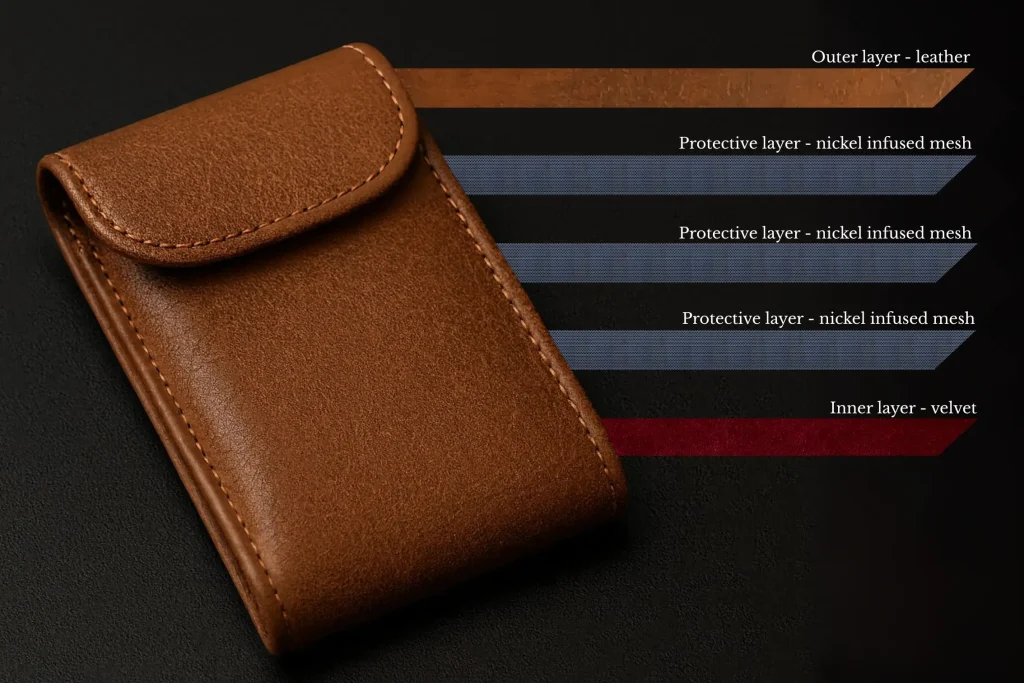
Look for multi-layer shielding fabrics (often infused with metals such as nickel, copper or silver) and brands that are transparent about test results.
The product listing should describe which frequencies are blocked (usually it should be cellular, Wi-Fi, Bluetooth, GPS and RFID, but it all depends on the purpose of the Faraday Pouch) and by how much (published dB attenuation or a simple frequency/attenuation chart). Citations, independent lab testing or recognized test protocols/standards are a good sign too.
If a product doesn’t share this info, assume the shielding may be weak or inconsistent.
Inspect construction
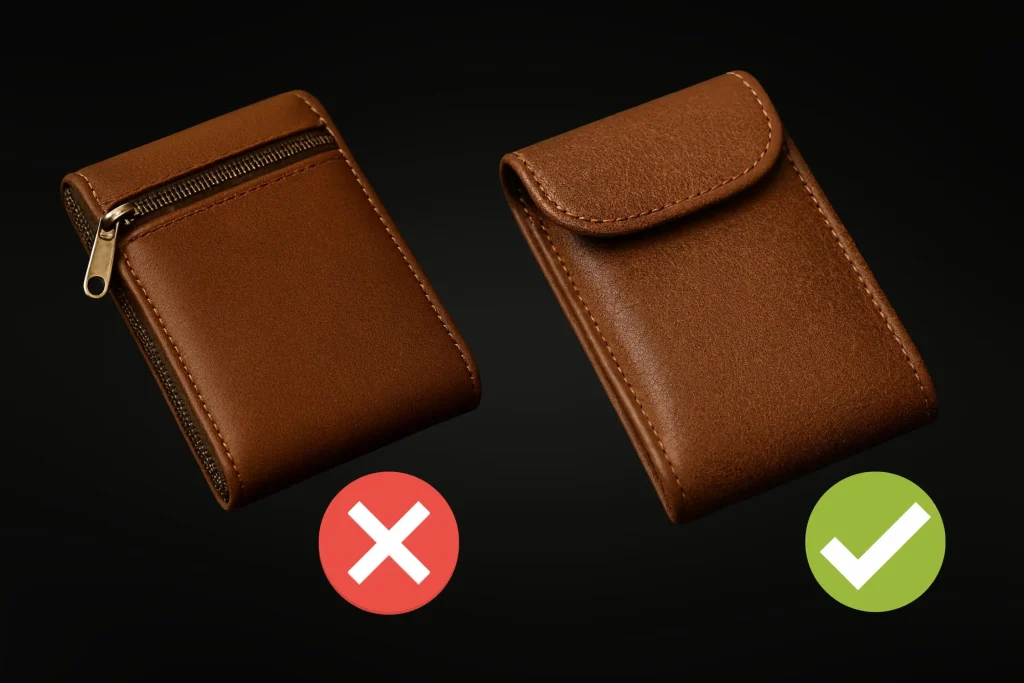
As it’s been previously mentioned, the weakest part of the Faraday Pouch is its opening. Keeping that in mind, choose a pouch with an overlapping closure— preferably roll-top, fold-over, or magnetic—so the opening stays fully sealed at all times.
Other gaps in protection might come from wrong stitching – make sure that it is neat and reinforced without punching holes throughout the shielding fabric where it matters.
You should also keep in mind everything wears down with time, especially when in frequent use. A tough outer layer of the Faraday Pouch (nylon or leather) with a sturdy conductive liner will easily handle daily use without creasing or wearing out.
Last one is more of a comfort suggestion than a requirement – for everyday convenience, a two-pocket setup, where one pocket is shielded and one isn’t, is ideal: it guarantees quick access without a full isolation.
Size for the device
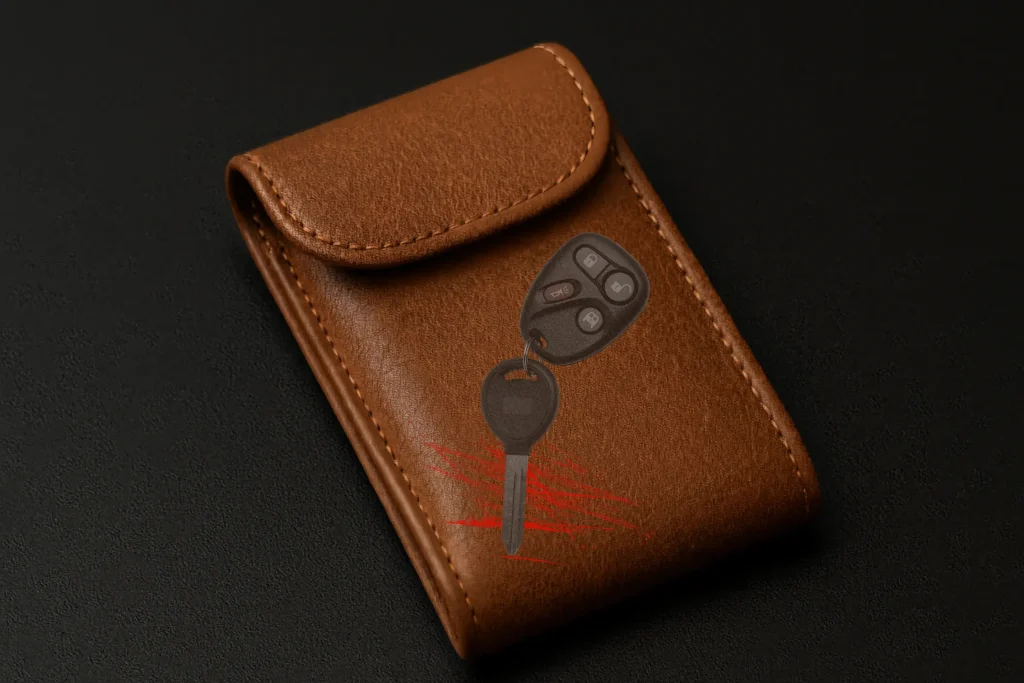
Contrary to popular belief, size does matter, especially when it comes to protection.
If the Faraday Pouch is too small, and the item inside needs to be forced in or stretches the fabric, the consequences are pretty straight-forward. Textiles, while being stretched, can develop gaps that allow the signal to leak out, and therefore the whole pouch loses it’s purpose.
If it’s too big, the user error margin extends – it’s harder to seal properly. Also, it risks more wear-n-tear down the line – if the Faraday Pouch is too big, the items (such as keys) inside will rattle and rub against the protective layers, eventually wearing them down. Same thing could also cause accidental openings, especially with velcro closures (if the products moves and presses agaisnt the closure, it can force it open.
What’s the ideal size then? Usually one that is just bit bigger than the protected item itself. Leave yourself a 10 to 20% margin, that will allow the device to fully with without any struggle, and prevent it from moving around the pouch itself.
Brand comparison: well-known Faraday Pouch makers
Let’s get into specifics. We’ve compiled the five most popular brands that offer Faraday Pouches and rated them based on 5 categories – Shielding Performance, Seal Reliability, Materials & Durability, Usability & Variations, and Price vs Value – to help you determine which brand fits your needs best.
Mission Darkness

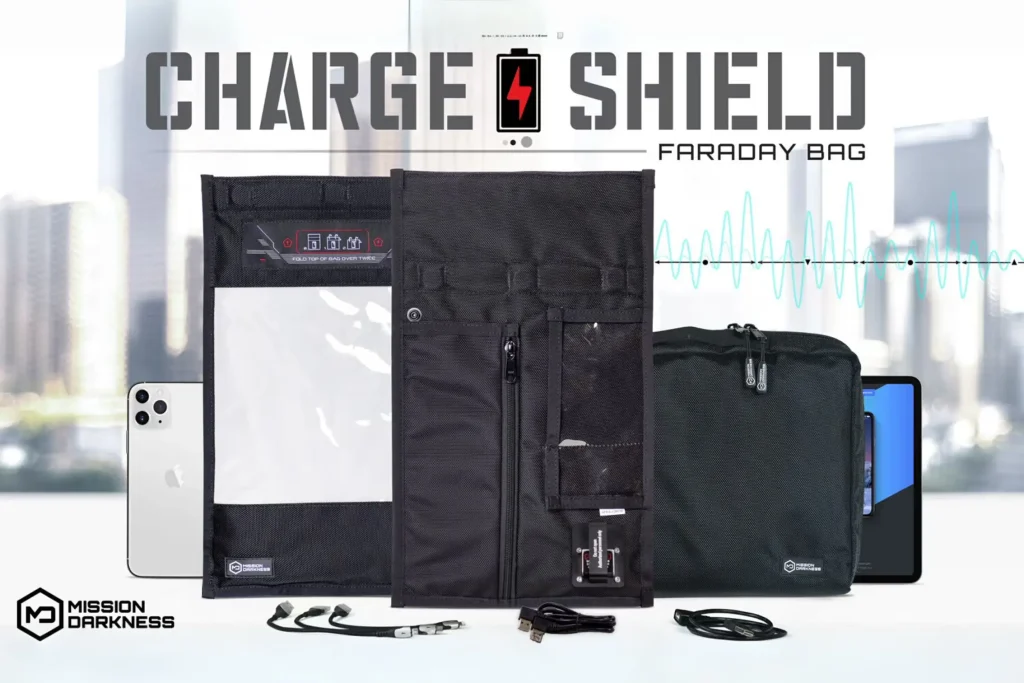
Shielding performance 5/5
Effectively blocks cellular, Wi-Fi, Bluetooth, GPS and RFID signals. Perfect when you can’t afford have your signal stolen.
Seal Reliability 5/5
Wide roll-top and fold designs give plenty overlap, which guarantees a tight seal and security.
Materials & Durability 5/5
Rugged outer layer often resembles a ballistic style. The multi-layer inner liners resist creasing and abrasion from keys, cables, and field use.
Usability & Variations 5/5
Definitely one of the broadest ranges, offering phone sleeves, tablet/laptop bags, duffels — different shapes and sizes to fit everybody’s needs.
Price vs Value 4/5
Premium price point, but justified for frequent use and maximum assurance.
Overall ranking: 4.8 out of 5
Disklabs
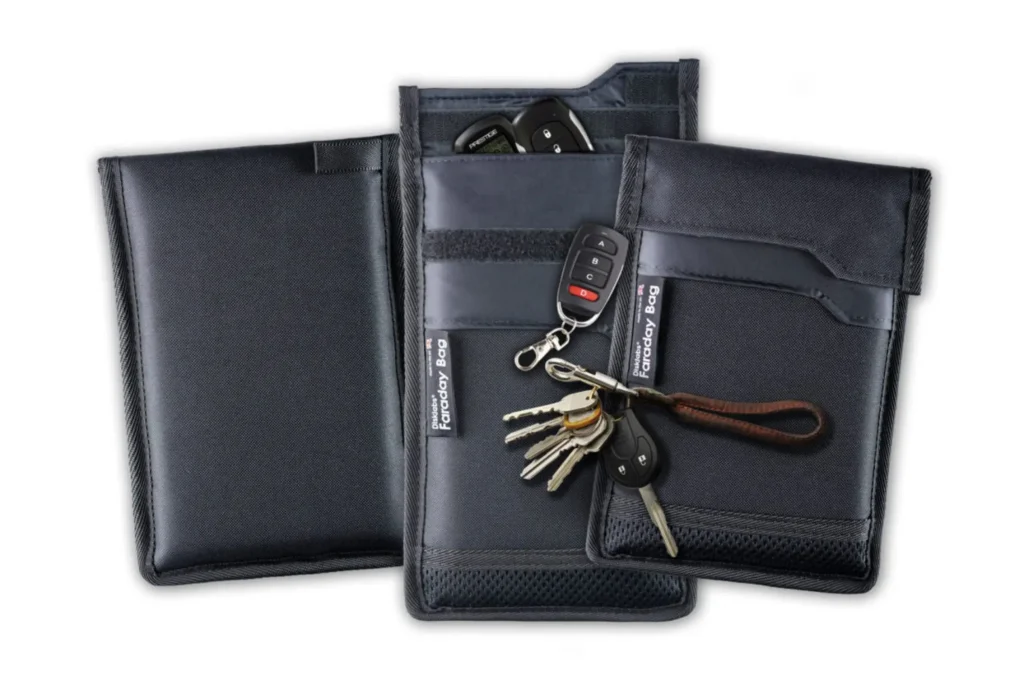
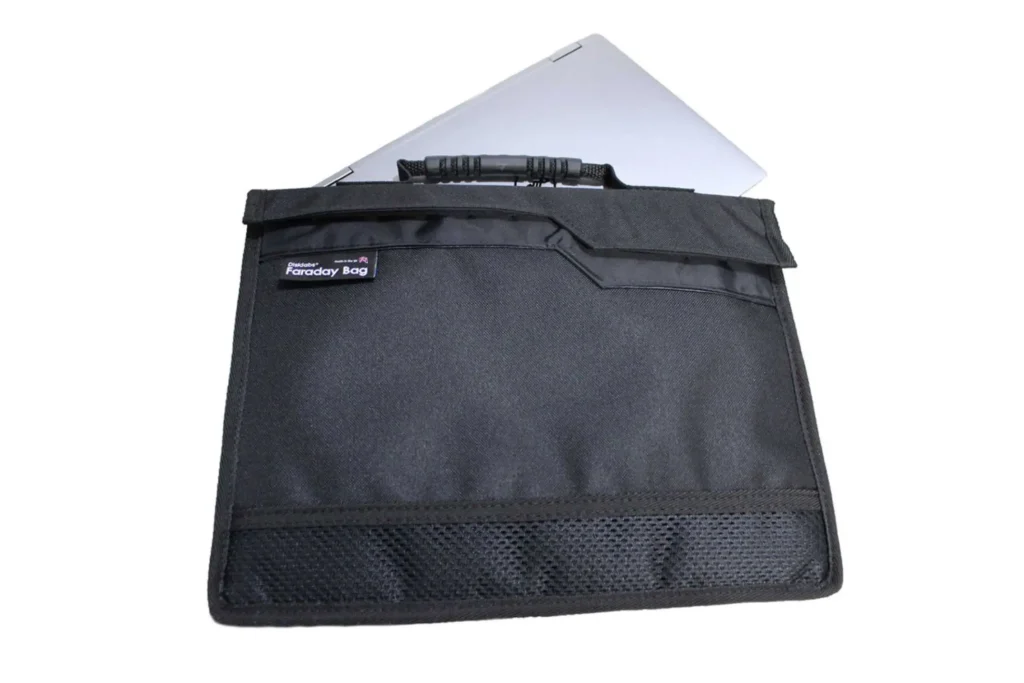
Shielding performance 5/5:
Multiple tests prove that once sealed, keys and phones are truly offline. Excellent against relay attacks.
Closure/seal reliability 5/5:
Firm fold-over/Velcro closures with good tactile feedback make it obvious when the seal is right.
Materials & durability 5/5:
Utilitarian fabrics and robust liner integration are built for heavy, repeated handling in pockets, patrol bags, or labs.
Usability & form factors 4/5:
Plenty key-fob and phone options, less for bigger devices. Very straightforward in practice.
Price/value 3/5:
Higher-end, recommended for users who prioritize police-grade performance over aesthetics
Overall ranking: 4.4 out of 5
SLNT (formerly Silent Pocket)
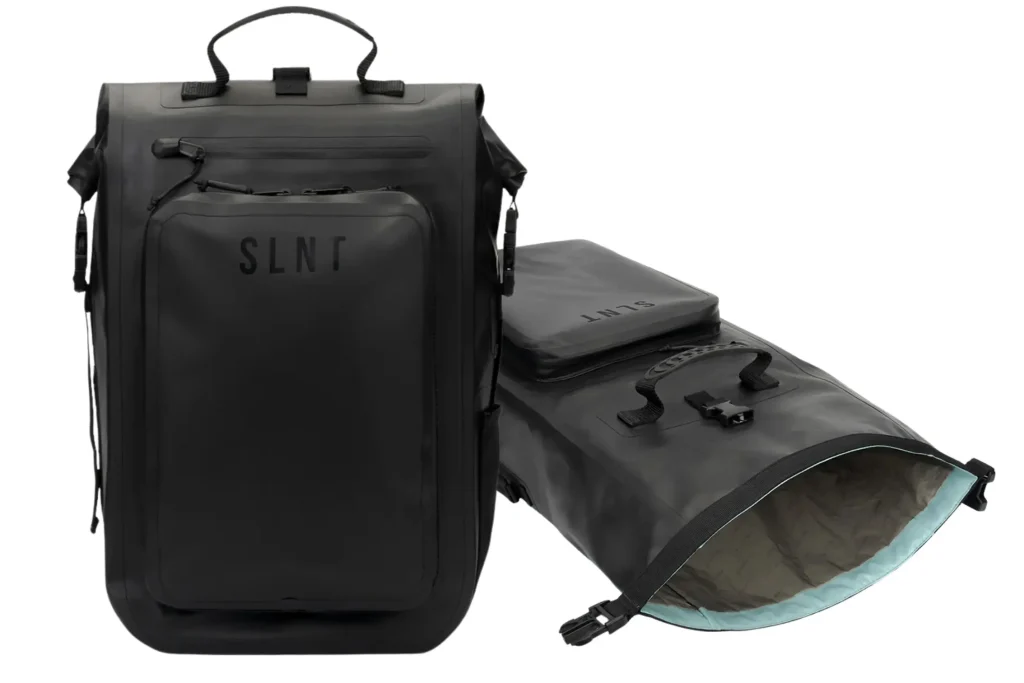

Shielding performance 5/5:
Strong multi-band isolation in well-closed sleeves—reliable for phones and passports during travel or sensitive meetings.
Closure/seal reliability 5/5:
Magnetic closures align cleanly and seal well, reducing user error.
Materials & durability 4/5:
Nylon and leather combo creates a premium design and durability, though leather can show cosmetic wear sooner than tactical nylon.
Usability & form factors 5/5:
Executive-friendly designs that disappear into normal EDC; plenty of sizes and combos.
Price/value 3/5:
High-end, covering performance and design—ideal for professionals who want elegant security.
Overall ranking: 4.4 out of 5
Defender Signal Blocker
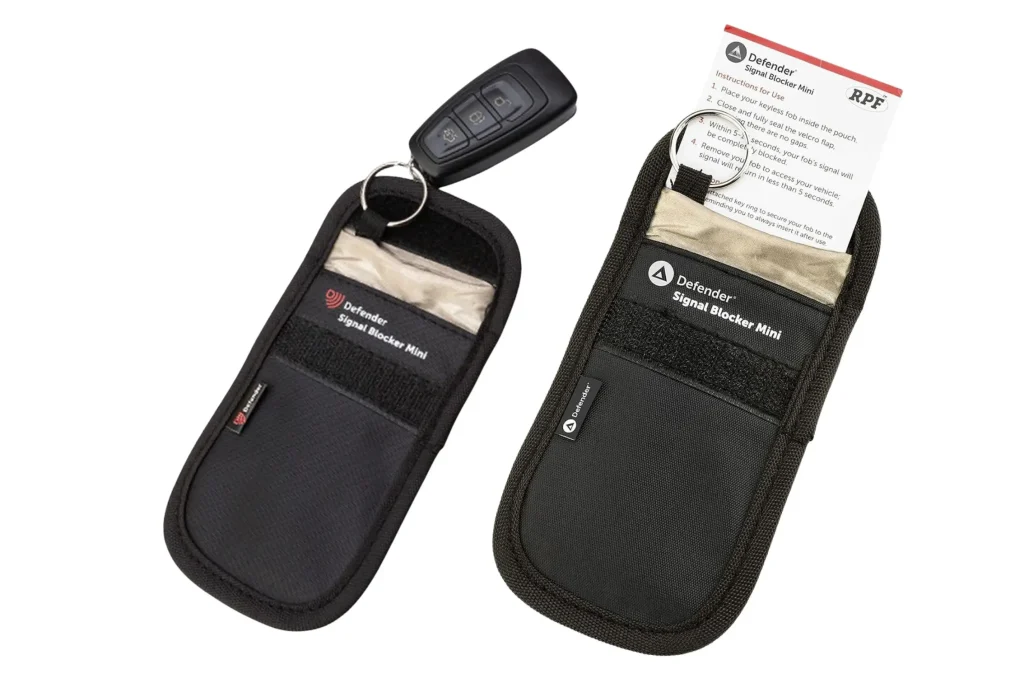
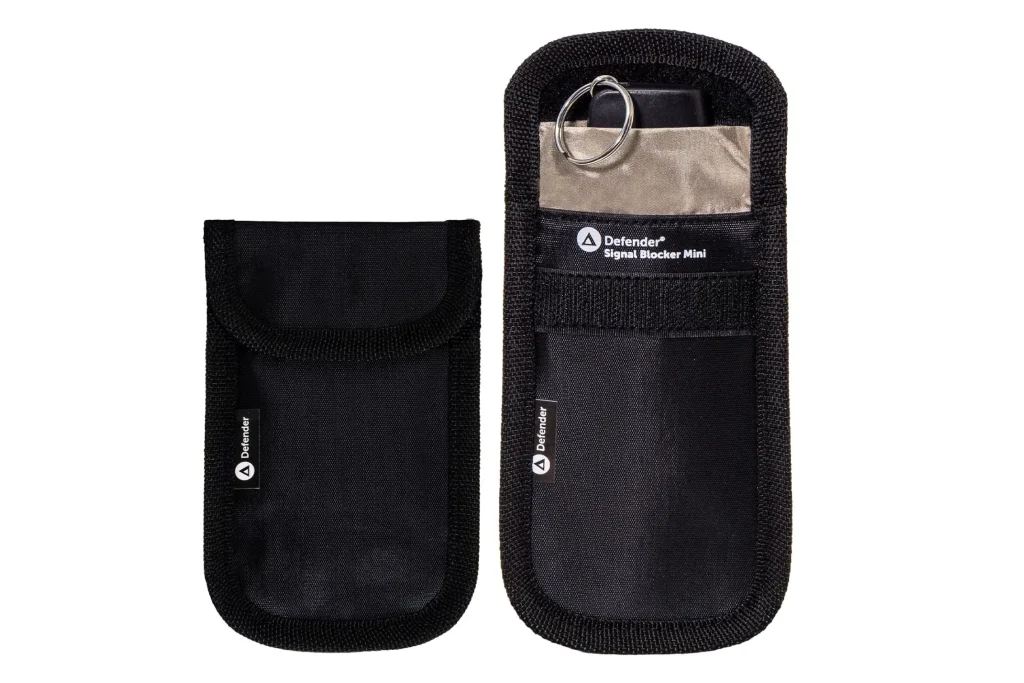
Shielding performance 4/5:
Focused on car-key protection; successfully blocks keyless entry/start signals and works for short phone isolation when required.
Closure/seal reliability 4/5:
Simple, yet sturdy flap proviides consistent protection, as long as you avoid overstuffing.
Materials & durability 4/5:
Meant for pockets and glove boxes without wearing off. Liners hold up well with typical key carry.
Usability & form factors 3/5:
Narrow, purpose-built lineup (car key fobs); very limited options for larger devices.
Price/value 5/5:
Excellent, given it’s reliavility in defending against relay attacks
Overall ranking: 4 out of 5
Lanpard & similar marketplace brands
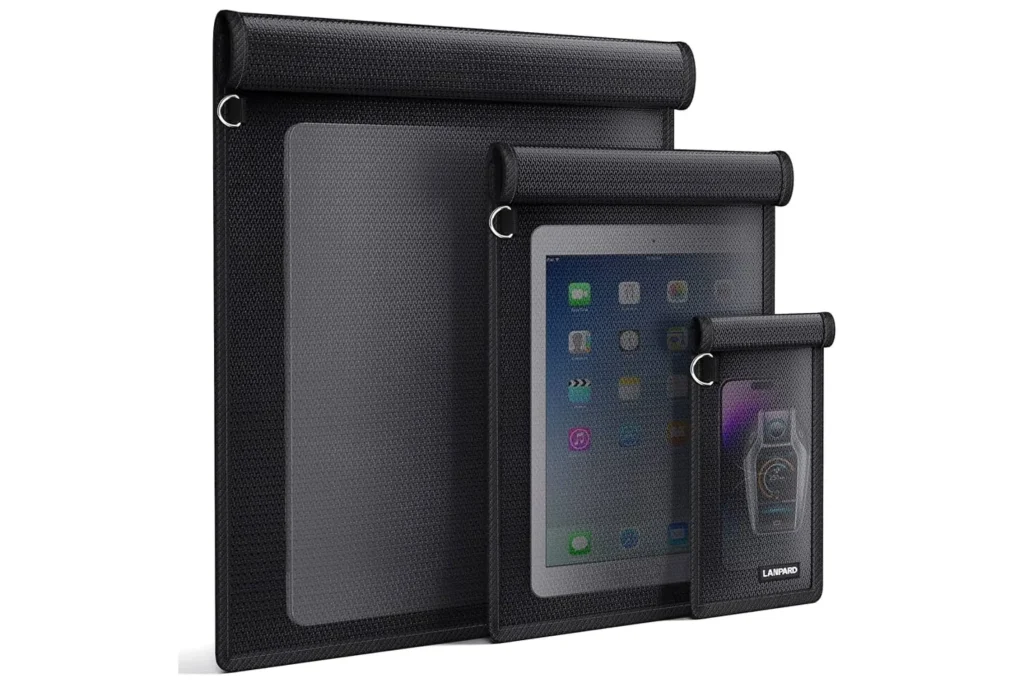
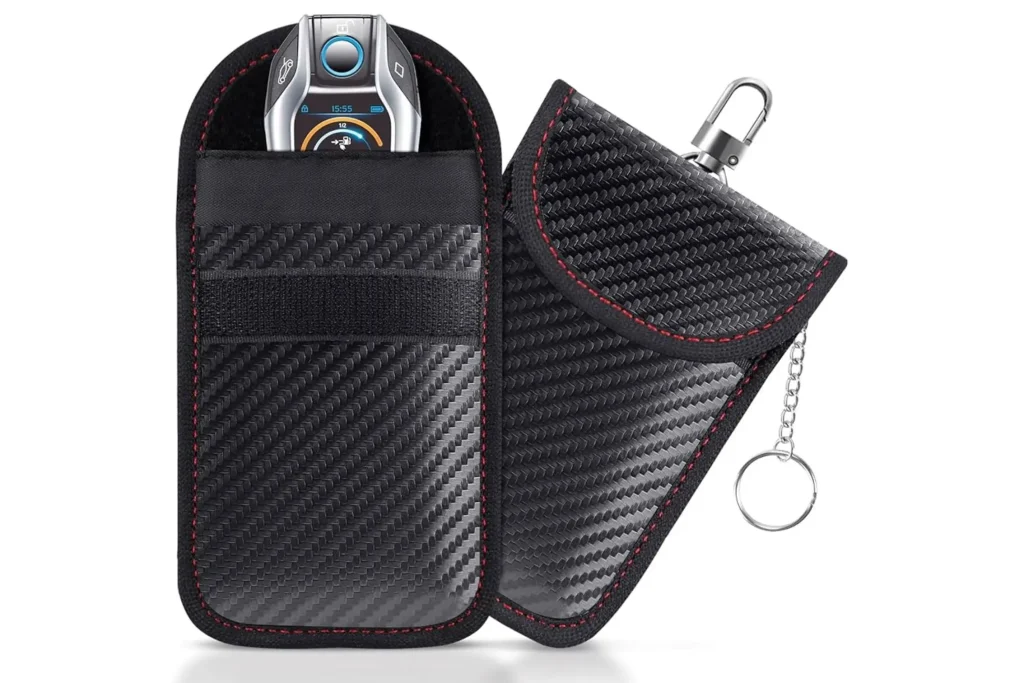
Shielding performance 3/5:
Generally sufficient for casual use, f. ex. spare keys, but effectiveness can vary—always test on arrival.
Closure/seal reliability 3/5:
Functional closures, yet extra care is needed to prevent small gaps creating .
Materials & durability 3/5:
Lightweight and affordable, but liners wear faster with daily friction from everyday use.
Usability & form factors 3/5:
Lots of sizes and multi-packs; ergonomics are basic and consistency varies.
Price/value 5/5:
Low cost of a big benefit, but lower durability calls for backups or sparse use—plan on earlier replacement and test from time to time.
Overall ranking: 3.4 out of 5
Summary
In the end, your choice choice will depend on what do you need the Faraday Pouch for – if you care about performance, durability, pick Mission Darkness or Disklabs.
If you’re more into classic, yet effective and discreet protection, go for SLNT.
For affordable, yet reliavle car key protection choose Defender Signal Blocker.
For cheap backups or spares, pick Lanpard and other affordable brands.
Alternatives to Faraday Pouch
After some solid sugesstions for professionally made Faraday Pouches, it would be a disservice if we didn’t talk about other solutions, ones that might not come to mind first while thinking about getting a Faraday Pouch.
Metal boxes
Maybe a little dystopian, but works surprisingly well. You can use a simple tin can – put it next to the entrance to your house and put your car keys inside to protect your car from relay attack – just make sure to seal it well!
The idea itself isn’t bad, but definitely unpractical and limits your possibilities – you won’t walk around with a tin can in your pocket. Also, the seal on it might not be tight enough, not providing enought protection.
Power supply control – Keyless Protector
Instead of blocking the signal, you can also try attacking the problem from the source – that’s what Keyless Protector does. It controls the power supply in a car key fob, effectively turning it off when it’s not in use. With no power, the keyfob doesn’t transmit any signals, so it cannot be relayed, and the car cannot be stolen. The power is automatically restored after sensing motion or after a double-tap.
It’s more convenient than the Faraday Pouch – instead of having to store the key after every use, it’s automated. Another advantage lies in it’s seamless design – it’s installed inside of the keyfob, so it’s invisible during use. More about the product here.
How to test your Faraday Pouch
Quick Checklist
Even the best products wear off with frequent use. Microtears, worn-out lining – you might not even notice when the protection you work so hard to maintain slips away without noticing.
That’s why you should test your Faraday Pouch every couple weeks – to ensure that the safety is maintained.
Phone test

Place your phone inside of the Faraday Pouch and seal it fully, then try calling it. The desirable outcome is voicemail without ringing or any alerts on the phone inside.
Bluetooth test
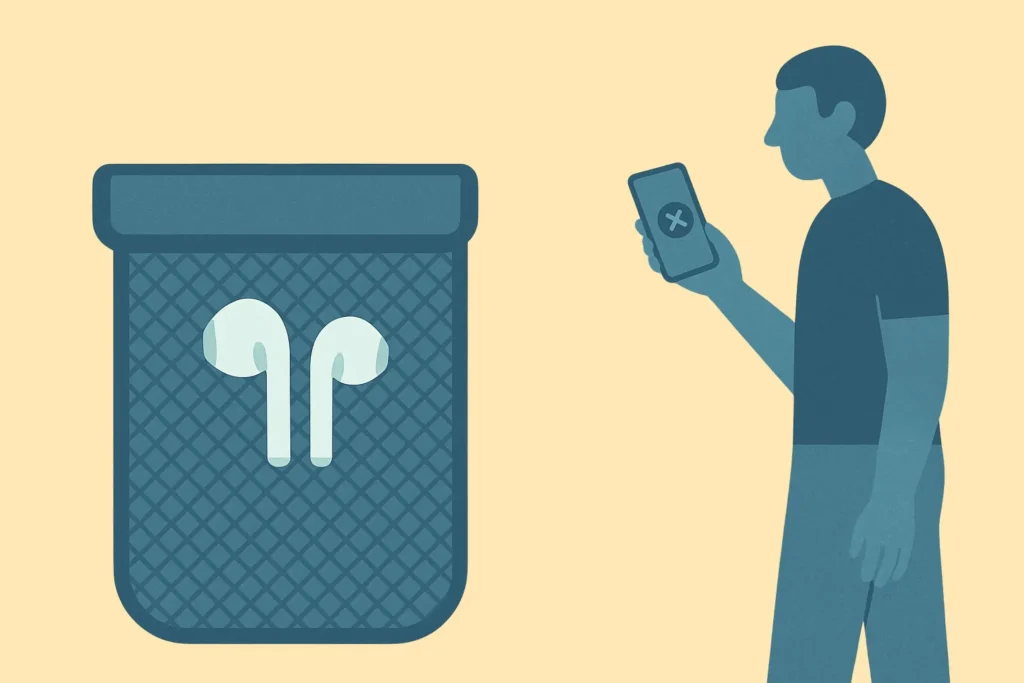
After placing the bluetooth device (recommended earbuds for their compact size) inside the Faraday Pouch, try connecting them with a device. If the connction is unsuccessful, the pouch is working as it should.
Car key test
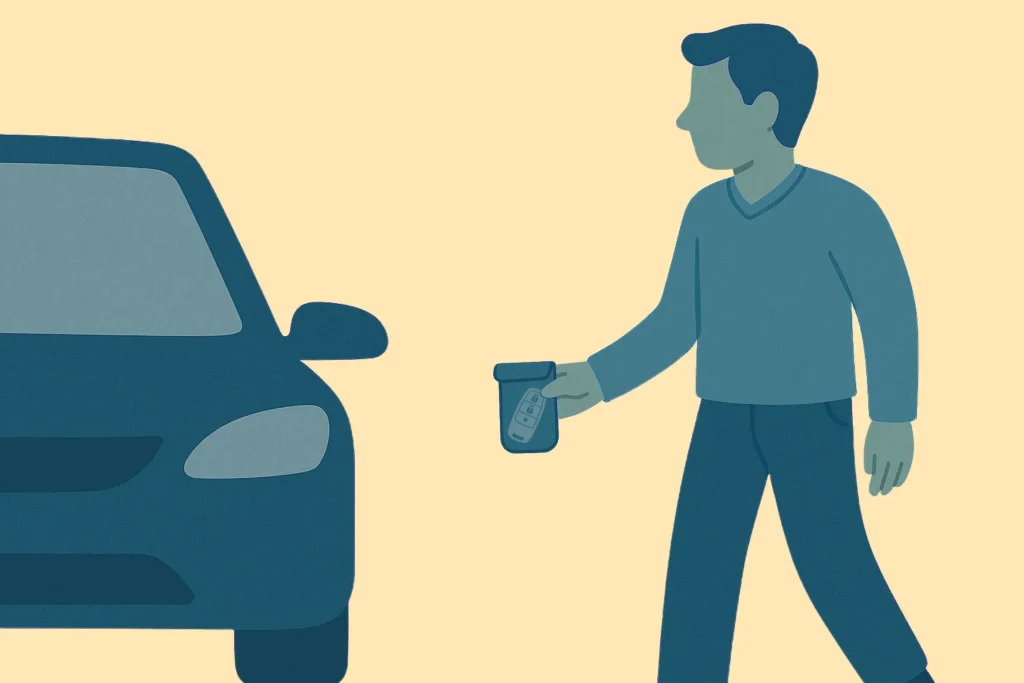
With the key fob inside the Faraday Pouch, approach your car and attempt to open the door. Expect the door to stay closed with no response.
Conclusion – why do you need a Faraday Pouch?

Wireless technology, as convenient as it is with contactless payment, keyless entry and easy access to the outside world, brings invisible risks. Relay Theft, skimming, tracking are just a few of the ways your privacy and property can be compromised.
A Faraday Pouch can provide security with surprising simplicity – with many designs, price points and versions available on the market you can choose the one fitting your needs, slip your device inside and forget about all the dangers of the wireless tech.
It’s more than a piece of equipment – for everyday consumers, it means sleeping easier at night with their car in the driveway, or travelling with confidence without worry that your information is leaking from your passport or cards.



